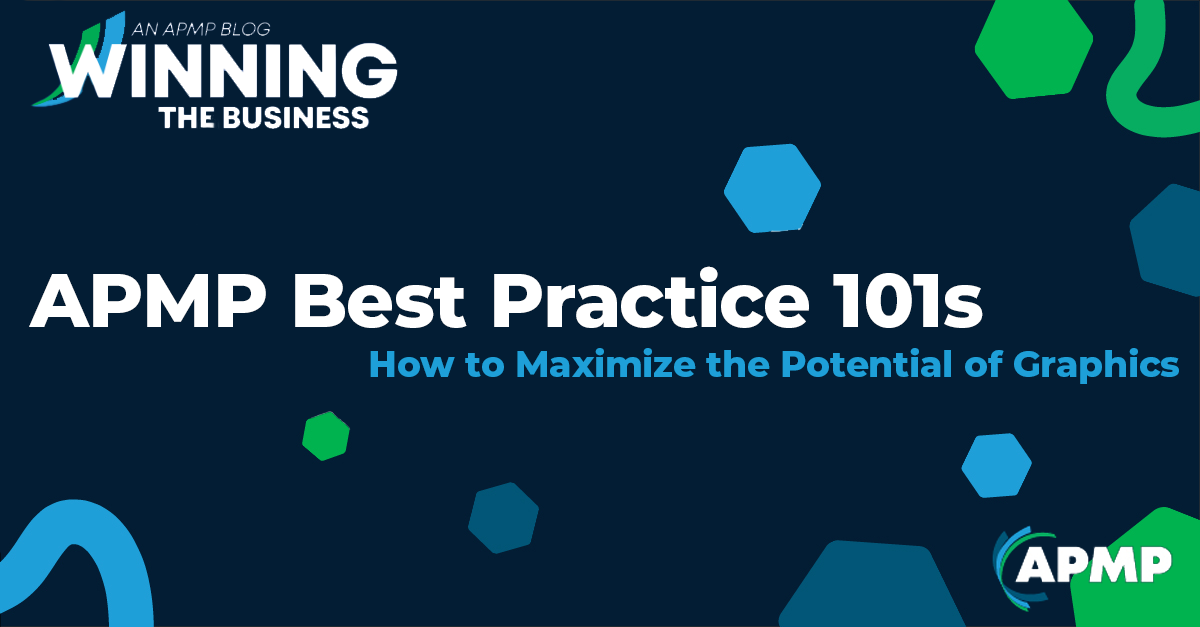We all know that graphics are important in proposals. They are a vital assist in conveying and spotlighting complex information, and enhancing your customers’ perception of your brand.
But graphics are more a nice addition to a proposal – in fact, they can actually increase your win rates. A good proposal is developed to be maximized for the evaluators who will likely be skim reading it in order to pull out the information that will be the most relevant to their needs. Graphics can aid your evaluator in digesting that information by breaking it down into compelling chunks that can be understood quickly and recalled more easily. Thus, they shouldn’t be relegated to an afterthought or a last-minute embellishment.
In this article, I’m going to give you some key tips for creating compelling graphics that will enrich the impact of your proposals on evaluators, and show you how you can create winning graphics every time by becoming a certified graphics whiz!
Optimising your graphics process
Ensuring that you have solid processes in place that solidify the consistency of your graphics and the efficiency of creation is just as important as the actual design of the graphics. Here are a few tips you can implement to maximize your graphics process:
- Make the most of templates – a good template is not just important for saving time, it is the key to ensuring consistency and professionalism in your graphics. Having a robust template system, including pre-defined color palettes, fonts, icons, dimensions and styles, can help you establish a unified visual identity for your brand.
- Make sure you understand file formats – you should know when to use vector graphics versus raster graphics to ensure your graphics are always sharp and professional. Vector images are scalable without quality loss, making them ideal for logos and icons that require resizing. Raster images, composed of pixels, are suitable for detailed photographs but must be carefully managed to maintain resolution.
- Maintain an efficient content management system for your graphic assets – having some centralized repository that all relevant team members can access is important for workflow, collaboration and version control.
- Create and follow clear workflows – making sure that the roles and responsibilities of your team members are clearly defined is vital to ensuring good team collaboration. This means ensuring that everyone is aware who has permissions to edit, review and approve graphic assets, as well as having a clear process for providing feedback and making changes.
Design best practices
Graphics don’t just need to look pretty, there are several principles that you need to take into account to ensure that they achieve their intended purposes. Here are a few tips you can implement to create optimized graphics:
- Keep your graphics simple and clear – the key point of using graphics in proposals is to communicate information clearly, so unnecessary embellishments to your graphics should be avoided. Focussing on one message at a time and working to reduce visual noise can make sure your graphics can be understood at a glance.
- Make sure your graphics are accessible – you don’t want to exclude anyone from understanding the information in your graphics. There are many things to consider in making your graphics accessible, including ensuring your typography is clear, providing alternative text for images and ensuring color contrasts are clear.
- Position your graphics strategically throughout the proposal – graphics should complement the narrative within your proposal and shouldn’t interrupt the flow of the information. For example, try to avoid mixing and matching with orientations, i.e. shifting from portrait to landscape in a way that requires your evaluator to rotate or turn the page, as this can take the reader out of the moment. You should also ensure you include identifiers, e.g. ‘Figure 1’, to aid with navigation, and action captions that detail the significance of the graphic.
Perfect your graphics prowess
People are more likely to favor an option that they find aesthetically appealing, and your proposal is no exception! But a bad graphic can confuse a reader more than it helps them. Given their connection to boosting win rates, getting graphics right is crucial, and APMP can help you with that!
We offer a Graphics Micro-certification that can give you all of the knowledge and understanding of graphics best practices that you need to leverage the potential of graphics in your proposals.
There are no prerequisites to getting this qualification – you don’t need any experience or even to be a member of APMP. All that stands between you and the ‘GR-M’ postnominal that sets you apart from others in your field is 30 multiple choice questions!
Did you know that:
- Employers are, on average, 72% more likely to hire a candidate with a relevant micro-certification?
- Nearly 70% of US workers who hold some form of micro-credential believe that earning it has helped them to progress in their careers?
- 73% of employers say that micro-certifications help to improve the quality of their workforces?
What are you waiting for? Learn more about the micro-certification, or book your exam, here.
Want to write for the Winning The Business blog?
As well as keeping APMP members up to date with the goings-on at APMP HQ, this blog is an opportunity for you to share your valuable insights and experiences with the rest of the APMP community. After all, you’re the experts!
If you have tips, experiences, practices or lessons learned that you’d like to write an article about, email me, APMP’s Writer/Editor, at erin.smith@apmp.org and I will guide you through the next steps. You can also check out our submission guidelines here. I’m looking forward to hearing from you.



Join the Conversation